
CATEGORIES:
BiologyChemistryConstructionCultureEcologyEconomyElectronicsFinanceGeographyHistoryInformaticsLawMathematicsMechanicsMedicineOtherPedagogyPhilosophyPhysicsPolicyPsychologySociologySportTourism
What do you have to do in this unit?
High dynamic range imaging systems (HDR) have become more widely used. Evaluation of HDR-systems colorimetry is a complex task as the existing color appearance models are based on relatively low-luminance experimental data. For instance, the LUTCHI color appearance data were obtained for luminances up to 690  (except the small amount of data obtained at 1000 and 1280
(except the small amount of data obtained at 1000 and 1280  ). CIECAM02 color appearance model specifically was developed based on this data and it is not intended to operate in high-luminance domain. In addition, the majority of tone-mapping operators (the transforms necessary for perceptually correct reproduction of HDR-content on low-dynamic range displays) compress luminance range only, without dealing with the colorimetric parameters of images, thus resulting the colorimetric distortions. Thus there’s necessity to create universal color appearance model that can be applied to high-luminance stimuli. The [4.11] is devoted to one of the such kind of models. As the model is still under development, and its formulation in [4.11] has some ambiguities, we give its description with introductory aim. The testing of this model [4.11] has shown that the accuracy of its predictions at low and average luminance levels is close to CIECAM02 (it’s not surprising as this model was created based on CIECAM02 and partially on LUTCHI data); and at high luminance levels (up to 16680
). CIECAM02 color appearance model specifically was developed based on this data and it is not intended to operate in high-luminance domain. In addition, the majority of tone-mapping operators (the transforms necessary for perceptually correct reproduction of HDR-content on low-dynamic range displays) compress luminance range only, without dealing with the colorimetric parameters of images, thus resulting the colorimetric distortions. Thus there’s necessity to create universal color appearance model that can be applied to high-luminance stimuli. The [4.11] is devoted to one of the such kind of models. As the model is still under development, and its formulation in [4.11] has some ambiguities, we give its description with introductory aim. The testing of this model [4.11] has shown that the accuracy of its predictions at low and average luminance levels is close to CIECAM02 (it’s not surprising as this model was created based on CIECAM02 and partially on LUTCHI data); and at high luminance levels (up to 16680  ) its performance exceeds CIECAM02.
) its performance exceeds CIECAM02.
The model consists of three main components: chromatic adaptation, cone responses, and cortex responses for each perceptual color attributes. It aims to accurately predict lightness, colorfulness and hue, including the Hunt effect, the Stevens effect, and simultaneous contrast. Additional correlates of brightness, chroma, and saturation will be derived as well.
As the focus of experiments [4.11] was not on chromatic adaptation, CIECAT02 chromatic adaptation transform [4.2] that has been shown to work well was adopted.
To evaluate cone responses Tristimulus values are first transformed into LMS cone space using the Hunt-Pointer-Estévez (HPE) transform [4.2, 4.4]. The cones’ absolute responses are modeled as following:
 (4.83)
(4.83)
where  is adaptation level value in
is adaptation level value in  . The adaptation level should ideally be the average luminance of the 10° viewing field. The parameter
. The adaptation level should ideally be the average luminance of the 10° viewing field. The parameter  is derived experimentally,
is derived experimentally,  .
.
The cone response then is converted into an achromatic signal A by averaging the contribution of each type of cone:
 (4.84)
(4.84)
The lightness is derived by:
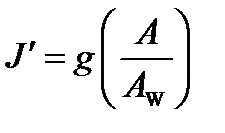 (4.85)
(4.85)
with
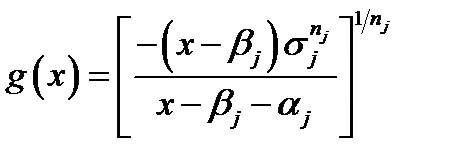 (4.86)
(4.86)
The values of the parameters are derived from experimental data, yielding  ,
,  ,
,  ,
,  . It is interesting to note that
. It is interesting to note that  may yield values below zero, in which case it should be clamped. This corresponds to the case where the observer cannot distinguish dark colors from even darker colors anymore.
may yield values below zero, in which case it should be clamped. This corresponds to the case where the observer cannot distinguish dark colors from even darker colors anymore.
As the perceived lightness values vary significantly with different media, the media-dependent lightness value is expressed as:
 (4.87)
(4.87)
where the parameter E is different for each medium. A value of  corresponds to a high-luminance LCD display, transparent advertising media yield
corresponds to a high-luminance LCD display, transparent advertising media yield  , CRT displays are
, CRT displays are  , and reflective paper is
, and reflective paper is  . These parameters were derived from the LUTCHI data set.
. These parameters were derived from the LUTCHI data set.
The brightness is defined as:
 (4.88)
(4.88)
The parameter  is derived from experimental data,
is derived from experimental data, 
Preliminary red-green and yellow-blue opponent dimensions are calculated using:
 (4.89)
(4.89)
 (4.91)
(4.91)
Chroma is calculated as:
 (4.90)
(4.90)
where  ,
,  ,
,
Colorfulness is defined as:
 (4.91)
(4.91)
where  is reference white luminance,
is reference white luminance,  ,
, 
The other remaining quantity is saturation, which by definition is the colorfulness relative to its own brightness:
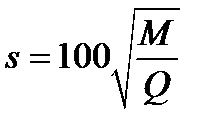 (4.92)
(4.92)
The hue angle is computed by:
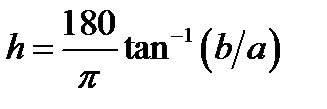 (4.93)
(4.93)
Inverse model computation:
1. Compute achromatic white point  of the target device using equations 4.82 and 4.83.
of the target device using equations 4.82 and 4.83.
2. Compute brightness Q from lightness J:
 (4.94)
(4.94)
3. Compute achromatic signal A from lightness J
 (4.95)
(4.95)
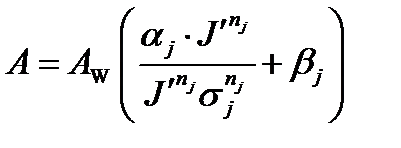 (4.96)
(4.96)
4. Compute chroma C from colorfulness M
 (4.97)
(4.97)
5. Compute color opponents a & b from chroma C and hue h
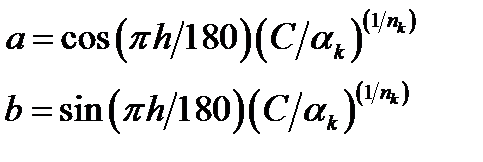 (4.98)
(4.98)
6. Compute cone signals LMS from the achromatic signal A and opponents a & b
 (4.99)
(4.99)
7. Compute cone signals LMS from nonlinear cone signals 
 (4.100)
(4.100)
8. Compute tristimulus  from cone signals LMS using the HPE transform.
from cone signals LMS using the HPE transform.
Apply inverse CIECAT02 transform (using target white).
What do you have to do in this unit?
· Warming-up discussion
· Input reading
· Self-assessment questions (SAQ)
· Exploratory tasks
· Observation task
· Micro-teaching
· Integrated task
Warming-up discussion 0
Assess the problems that you are likely to experience during your own lessons (5 – very serious problem, 4 – serious problem, 3 – average problem, 2 – little problem, 1 – no problem). Share your results. Suggest solutions.
| Problem | Rating | ||||
| Teaching pronunciation | |||||
| Explanation of grammar | |||||
| Grammar drill | |||||
| Vocabulary build-up | |||||
| Developing speaking skills | |||||
| Developing listening skills | |||||
| Developing reading skills | |||||
| Developing writing skills | |||||
| Keeping learners motivated | |||||
| Keeping discipline | |||||
| Giving creative lessons |
Input reading 1
Warming-up discussion 1.1
Create a mind-map showing your associations with a “effective lesson”.
 | |||||
 |  | ||||




 Effective lesson
Effective lesson
Mark the following ways of teaching as “modern” M, “effective” E or both (ME).
| Teaching ways | M, E or ME |
| A. Memorizing words | |
| B. Teaching to read through “phonics” (letter-sound relation) | |
| C. Find synonyms in the text | |
| D. Answer questions on the text | |
| E. Drilling grammar structures | |
| F. Communicative games | |
| G. Role-plays | |
| H. Group discussions | |
| I. Writing essays | |
| J. Problem solving |
(after the discussion see the “tip” in the answer keys)
Lesson concept
A lesson is a set of learning opportunities (Allwright, D. And K.Bailey. 1994. Focus on the Language Classroom. CUP. P. 23-24). An effective lesson enables the learners to learn. A good input from the teacher is not sufficient to make a lesson effective.
There are three major aspects of the lesson: syllabus, method and atmosphere.
Syllabus is the contents of what is being taught. Usually the contents of a lesson is the combination of the syllabus requirements and teachers’ own decisions about what should be taught in the lessons.
Method is a way towards the attainment of an ultimate goal of instruction.
A method is based on the approach to teaching, i.e. a set of assumptions about the nature of language, teaching and learning. It is a theoretical underpinning of the “method” (after Woods, D. 1996. Teacher Cognition in Language Teaching. CUP. P. 185). E.g. a theoretical underpinning of the “audio-lingual method” was “behaviorist” approach, while “communicative method” is largely based on the “cognitive approach” to teaching and learning through problem solving and communicating as if in the real world.
A method is based on principles of teaching i.e. major guidelines that channel teaching and learning activities. E.g. one of the principles in teaching communicatively is developing communicative competence in learners, i.e. their knowledge and skills enabling them to communicate in the real world.
A method is based on a set of techniques i.e. the ways to run learner communicative activities in the lesson. E.g. a popular technique for communicative instruction is information gap. With the help of this technique such activities as communicative games can be organized.
Method implementation depends much on teachers’ beliefs, views and knowledge. Teachers’ beliefs, views and knowledge play a crucial role in highlighting part of the syllabus, choosing a method of teaching and creating a certain atmosphere in the lesson.
Atmosphere is the spirit of the lesson, which can be relaxed or friendly, brisk and business-like.
The three aspects of the lesson (syllabus, method and atmosphere) produce three major lesson opportunities:
· input opportunity,
· practice opportunity
· opportunity for learner receptivity (high self-esteem, low anxiety, motivation, involvement, confidence and success-building)
Exploratory task 1.1
Give your comments on the learning opportunities that are created in the lessons with the following features:
| Features of the lesson | Input opportunities | Practice opportunities | Receptivity opportunities |
| 1. Teacher talking time | |||
| 2. Teacher waiting time | |||
| 3. Pair- and small-group work | |||
| 4. Building on learners’ success | |||
| 5. Learners’ time-on-task time | |||
| 6. Teacher’s non-judgement | |||
| 7. Learner-centered work |
A lesson models the learning process. A lesson can provide for a step-by-step learning, or rush the learners from one activity to another, or make the learners think hard about an issue in question, or focus on automatic drills etc.
The effectiveness of the lesson depends much on whether the lesson recognizes the reality of cognitive processes in learners. There are the following major phases of any learning
· task encounter
· dealing with the task
· storing the experience
· transferring knew knowledge/skills and emotional expectations into a new situation
· modifying one’s experience (knowledge/skills and emotional expectations)
A lesson experience modifies knowledge, experience and skills and this is how learning occurs (more can be found in Eyesenck, M. and M.Keane. 1997. Cognitive Psychology. Psychology Press. P. 7-12).
Exploratory task 1.2
Match the following activities with the results of learning and write your comments in the space provided. More than one “result” can be matched with some activities
| Activities | Results of Learning | ||
| Knowledge | Skills | Emotions | |
| 1. Teacher’s explanation | |||
| 2. Chorus drill after the teacher | |||
| 3. Opening the brackets in the grammar exercise | |||
| 4. Acting out real world situations | |||
| 5. Reciting a poem by heart | |||
| 6. Retelling the text | |||
| 7. Doing a multiple-choice test | |||
| 8. Problem solving activity | |||
| 9. Guessing game activity |
A lesson is an arena of learner interaction. The learners interact to combine the knowledge between themselves and to co-operate in producing ideas. They exchange and share knowledge between themselves. They can also mutually control each other and correct errors, as well as to coach each other for specific tasks and tests. For the purpose of interaction, the learners form pairs or small co-operative groups. First the learners may fail to co-operate effectively but gradually they learn how to perform effectively in pairs and small groups (Wright, T. 1987 The Role of Teachers and Learners. OUP).
SAQ 1.1
Match the model of seating arrangements in the classroom and the learner activities (Classification of seating arrangements is adapted from Scrivener, J. 1994. Learning Teaching. Heinemann. P. 95).
| Classroom organization | Activities |
| 1. In straight rows | A. Coaching each other |
| 2. In s circle | B. Practicing dialogues |
| 3. One circle inside the other | C. Jig-saw reading |
| 4. As a horseshoe | D. Free group talk |
| 5. Two straight lines | E. Information gap |
| 6. In pairs | F. Teacher-controlled group talk |
| 7. In small groups | G. Examination |
Interaction between the teacher and learners is necessary to react adequately to the real-life classroom setting. As a result of interacting with the class, a teacher can make changes in the syllabus, method and input for the lesson. Lesson atmosphere, practice opportunities and attempts to enhance learner receptivity can also be better adapted to the learners (after Allwright, D. and K.Bailey. 1994. Focus on the Language Classroom. CUP. P. 25).
Exploratory task 1.3
Indicate in the space provided what on-line (spontaneous) changes can be done to the lesson as a result of classroom interaction
| Lesson components | On-line changes and reasons |
| 1. Syllabus | |
| 2. Method (principles of teaching) | |
| 3. Approach (theoretical basis) | |
| 4. Atmosphere | |
| 5. Input | |
| 6. Practice opportunities | |
| 7. Learner receptivity | |
| 8. Techniques | |
| 9. Materials |
Lesson types can be described in a number of metaphors.
· variety show is a pleasing to watch lesson, which is designed to take stock or to make an impression on the visitors
· climbing a mountain is a challenge for the learners. This lesson needs investment of effort on the part of the learners and the teacher. The reward is successful achievement of the aim
· eating a meal is an essentially receptive and drilling lesson focused on receiving and reinforcing the input (After Ur, P. 1996. A Course in English Language Teaching. CUP. P. 223-224).
Exploratory task 1.4
Write a short variant of a lesson plan on any topic and in any free format. Exchange your lesson plans in the group and tick a the metaphors to describe the lesson
| Lesson play | Metaphors |
| · Variety show · Climbing a mountain · Eating a meal |
In sum, a lesson as a concept can be given the following definition
| A lesson is an organized and goal-oriented process, which is a set of learning opportunities, a model of cognition and a framework for interaction of the participants. |
Exploratory task 1.5
In the space provided describe how you understand the following lesson criteria
| Lesson criteria | Comment |
| 1. Organized lesson | |
| 2. Goal-oriented process | |
| 3. Learning opportunities | |
| 4. Creating knowledge | |
| 5. Creating experience | |
| 6. Creating skills | |
| 7. Learner interaction |
Input reading 2
Lesson planning
A lesson can consist either of a single long activity or of a number of shorter activities. These activities can either be united by an overall objective or each can have a different aim.
On the whole there are four basic types of the lesson planning: logical line, topic umbrella, jungle path and rag-bag.
In a logical line lesson there is a clear attempt to follow a logical path from one activity to the next. “Logical line” of activities means that there is a succession of tasks that gradually take the learners to the planned result. The relationship of tasks in the “logical line” is that of “cause and consequences”. E.g. the learners first achieve a general understanding of the text and then move on to work at specific details. In the “logical line” lesson there is in most cases one clear and overall objective.
A topic umbrella lesson is given to one general topic (e.g. “healthy food”) that is used as the main focal point for all the activities. The teacher might use a variety of activities such as “vocabulary”, “grammar”, “speaking”, “listening”, “reading” and “writing” linked to one and the same umbrella topic. In a “topic umbrella” lesson there can be a number of related objectives, e.g. to study the vocabulary related to “healthy food”, to study the expression of future in the “if clauses” (If you eat … you will …), to listen to a lecture episode on healthy diets etc.
Jungle path lesson is not planned or predicted in any way but is created moment by moment in class. The starting point can be an open-ended activity such as brainstorming but the outcome will remain a mystery until it happens in class. During this lesson a teacher focuses predominantly on the learners and the classroom situation rather than on the materials and plans. E.g. the learners can ask about the language problems they have come across in the reading activity and the whole work will shift in this direction. Thus, planning belongs to a high degree to the learners themselves on the spur of the moment.
Rag-bag is a sequence of unconnected activities. These lessons are designed to keep the learners entertained and involved. This type of lessons could be appropriate for the young learners with a short attention span. There is no overall objective in such lessons (Scrivener, J. 1994. Learning Teaching. Heinemann. P. 32-37)
Exploratory task 2.1
In the space provided give the “pros” and “cons” of every lesson planning type
| Lesson planning type | Pros | Cons |
| 1. Logical line | ||
| 2. Topic umbrella | ||
| 3. Jungle path | ||
| 4. Rag-bag |
One of the major challenges that a teacher can face in preparing a lesson is designing the sequence of activities. One of the most frequent models to sequence the activities in the lesson is the stepping way. It is a lesson with consisting of several logically organized activities as “steps towards a goal”. Another model is the convergent way with a variety of different activities (e.g. developing grammar and vocabulary) all converging towards achieving a lesson objective. The third possible model is the divergent way, in which many objectives are pursued during one lesson.
Stepping way
| ||||
   Convergent way
Convergent way
| ||||
| Divergent way |
Exploratory task 2.2
Here are possible activities that a teacher can run with the learners in the video-assisted lesson. How can you sequence these activities of using video-film in the lesson? Add other tasks if necessary.
| Activities | Sequence of tasks |
| a) Silent viewing (picture only) | 1 2 3 4 5 6 7 8 9 |
| b) Freeze frame (stop playing the tape) | |
| c) Role-play | |
| d) Behavior observations (gestures etc) | |
| e) Prediction (what will come next?) | |
| f) Thinking-and-feeling analysis | |
| g) Blind viewing (sound only) | |
| h) Culture comparison | |
| i) Pair viewing (one watches while the other sits with one’s back to the screen and asks questions) |
Planning a lesson starts with clarifying its objective. Objective implies a “mission” that is performed during the activity.
Lesson objectives often includes the following four components: contents (a certain contents area to be dealt with in the lesson), skill (a certain communicative skill or language area will be developed during the lesson), technique (a certain technique will be implemented in the attempt to organize teaching and learning) and product (a certain result will be produced by the learners in the lesson).
E.g. lesson objectives can be described in the following way:
| Lesson objectives | Contents: the topic area of the lesson |
| Skill: scanning reading | |
| Technique: brainstorming, information gap, jigsaw | |
| Product: vocabulary lists, written papers, charts etc. |
A lesson can be planned in the three-phase framework. Lead-in is designed to activate prior knowledge in the learners, to prepare the learners for the contents and the language that are necessary for the main activity in the lesson. The format of planning below provides for a detailed lay-out of the prepared lesson (the topic of the lesson is “Your safety”
| Phase | Procedure | |
| LEAD-IN | Teacher | Learners |
| Activating prior knowledge Preparing for the contents Preparing for the language | Organizes brainstorming of “Sources of danger” Shows pictures of dangerous situations Focuses on the language to describe dangerous situations and behavior in these situations | Produce a mind map that shows the sources of danger Comment on the pictures. Do a text-cloze activity |
Main activity develops the skill and produces the result that is deemed as most important for this particular lesson. In the lesson “Your safety” the main activity can be “jigsaw reading”. Planning this part of the lesson is shown in the chart:
| Phase | Procedure | |
| MAIN ACTIVITY | Teacher | Learners |
| Jigsaw reading | Distributes bits of reading among the learners | Read their bits individually |
| Organizes sharing information in small groups | Share information in small groups | |
| Organizes sharing information in the whole class | Share information in the whole class | |
| Suggests completing the chart “Danger and safety” | Complete the chart “Danger and safety”(the teacher plans a possible variant of the chart before the lesson) |
Follow-up phase is the time to reflect on the main activity, to revisit the contents, ideas and language and to set a further task. Follow-up phase is also important because it is a bridge for the development of the integrated communicative skills in learners. E.g. the “main activity” can be based on “jig-saw reading” while the “follow-up” can be the time to integrate reading and writing and to produce a written piece of work. A possible planning of this phase is given in the chart:
| Phase | Procedure | |
| FOLLOW-UP | Teacher | Learners |
| Ranking | Suggests ranking the sources of danger in the order of their potential hazard for the learners | Do the ranking procedure and discuss their variants of ranking. |
| Vocabulary build-up | Focuses on the useful vocabulary and grammar | Organize vocabulary in a list of entries for further use and memorization. |
| Homework of writing a leaflet | Gives a task to write at home a leaflet “Be safe!” | Discuss with the teacher the format of writing a leaflet, familiarize with pieces of writing, organize the ideas, select vocabulary. |
Exploratory task 2.3
Produce a lesson plan following the given format
| Level of English Course-book | |
| Lesson objectives | Contents: |
| Skill: | |
| Technique: | |
| Product: |
| Phase | Procedure | |
| LEAD-IN | Teacher | Learners |
| Phase | Procedure | |
| MAIN ACTIVITY | Teacher | Learners |
| Phase | Procedure | |
| FOLLOW-UP | Teacher | Learners |
Lesson design can be described with the help of the following metaphors: balance, switchboard, jigsaw, domino, thread.
Lesson balance means that communicative activities can strike a balance with non-communicative tasks that are necessary to achieve the lesson goals.
Lesson switchboard means that every lesson is expected to have one “central idea” that unites all the lesson elements like a switchboard unites the telephone users.
Lesson jigsaw symbolizes a lesson, in which every episode fits perfectly with the rest just as jigsaw elements fit well with each other.
Lesson domino emphasizes the succession of activities in the lesson that follow each other as prompted by the logic of teaching just as dominos follow each other in the non-random order.
Lesson thread represents a lesson as a single thread, on which at every moment of the lesson a certain episode can be highlighted and given considerable time and attention.
Exploratory task 2.4
Consider the following traditional lesson plan against the “lesson metaphors” and suggest the ways to improve it. Give examples of the “lesson metaphors” from the lesson plan in the grid below. Rewrite the lesson plan in the three phase framework.
- Object. To develop reading, listening and speaking skills.
- Level: 6th form.
- Learners talk about the weather.
- Phonetic drill of the words, which will be used in the text for reading and listening.
- Reviewing the material of the previous lesson (text and lexis).
- Reading a new text aloud after the teacher in chorus and then in turn.
- Translating the text around the class.
- Answering teacher’s questions about the text.
- Grammar. Translating sentences from Russian into English.
- Drilling a grammar structure with transformations.
- Lexical drill. Paraphrase of new words.
- Listening to a text read by the teacher.
- Answering teacher’s questions about the text for listening to check comprehension.
- Marking sentences from the text as “true” or “false”.
- A game for fun.
- Setting a home task.
- Assessing the learners at the end of the lesson.
| Balance | Switchboard | Jigsaw | Domino | Thread |
Giving a lesson involves classroom management. It involves the following elements:
· Starting a lesson
· Using classroom board in a well organized way
· Maintaining discipline in the classroom
· Arranging seats adequately to the tasks
· Confidence building in learners
· Timing a lesson
· Giving directions to the learners
· Rationing teacher talking time
· Rationing learner time on task
· Closing up
Exploratory task 2.5
Comment on the ways classroom management can be effective (give examples)
| Classroom management | Examples |
| · Starting a lesson · Using classroom board in a well organized way · Maintaining discipline in the classroom · Arranging seats adequately to the tasks · Confidence building in learners · Timing a lesson · Giving directions to the learners · Rationing teacher talking time · Rationing learner time on task · Closing up |
Exploratory task 2.6
Design an effective use of the classroom board and show a layout of materials including the topic of the lesson, the new vocabulary, the speech patterns, grammar structures, pictures for eliciting the language, homework.
 |
Exploratory task 2.7
Design activities that would fit the given organization of the classroom
| Types of interaction | Activities |
| 1. In two opposing teams | |
| 2. In small buzz groups | |
| 3. As a whole class |
Exploratory task 2.8
Discuss possible error correction strategies
| Error correction strategies |
| Strategy 1 |
| Strategy 2 |
| Strategy 3 |
| Strategy 4 |
| Strategy 5 |
Exploratory task 2.9
Brainstorm the questioning strategy, give examples and practice the questioning strategies in your micro-teaching
| Questioning strategy |
| Correction-for-form questions |
| Correction-for-meaning questions |
| Comprehension checks |
| Memory checks |
| Guiding questions |
| Inquisitive questions (Why…?) |
| Echo questions (to signal understanding, agreement and participation) |
Input reading 3
Lesson evaluation
Warming up discussion 3.1
Make up a list of qualities that a lesson observer needs to make the observation and reflection on the results of the observation more successful
There are at least three maxims of lesson observation that make the process more effective: attention, non-judgment, empathy. Attention means that a visitor is attentive to every detail of what is going on during the lesson. Non-judgment means that a visitor provides a mirroring reflection on the lesson without labeling the procedures as either “good” or “bad”. E.g. “If I’ve got it right, you’ve spent 30 minutes on explaining the grammar rule and the remaining 10 minutes were given to the analysis of examples…”. Empathy implies that a visitor is prepared to understand all the “coral reefs” of the lesson and to side fully with the teacher whose lesson is being observed.
Exploratory task 3.1
List possible foci of observation in the lesson and disclose the purpose in each case
| Focus | Purpose |
Lesson evaluation is done according to observation criteria. The criteria can be given in the form of propositions: “The class seemed to be learning the material well”, “The learners were engaging with the tasks throughout the lesson”, “The learners were attentive all the time”, “The learners were interested and motivated”, “The learners were active all the time”, “The lesson went according to a plan”, “The language was used communicatively throughout the lesson” (Ur, P. 1996. A Course in English Language Teaching. CUP. P. 230).
Observation can be done on the teacher, method and learner. Observing a teacher, the observer can concentrate on the following items “Maintains interest”, “Stimulates activity”, “Speaks audibly”, “Looks at the learners”, “Structures the material clearly”, “Gives explanations”, “Clarifies the goals”, “Advises on learning strategy”, “Encourages the learners” (After Woodward, T. 1995. Ways of Training. Longman. P. 35).
In observing the method of instruction the framework of observation will be different. The observers can concentrate on “Communicative activities”, “Interactive activities”, “Challenging activities”, “Comprehensible material”, “Motivating material”, “Logical sequence of activities”, “Developing communicative skills”, “Developing language competence”, “Reinforcing the knowledge”.
In observing the learner the observation format changes and can include the following: “Understand the task”, “Familiar with the task format” (obviously have experience in performing similar tasks), “Have a good command of previously learned knowledge”, “Give a prompt response to the teacher”, “Co-operate with the teacher”, “Co-operate with each other”, “Attentive”, “Involved in the lesson procedures”.
Exploratory task 3.2
Observe a video recording of a lesson and complete the grid below
| Items | Planning | Implementing | Evaluation |
| a) approach | |||
| b) method | |||
| c) atmosphere | |||
| d) management | |||
| e) assessment |
Observation format is the form into which the observation results are arranged:
· Bull's eye (Every arrow corresponds to a criteria of observation. The more the criteria are met in the lesson the closer will the arrow move towards the centre of the “bull’s eye”.
 |

 |


· Grid (Every box in the grid contains a criterion of observation. An observer writes comments in each box making explicit the goals of the lesson, the way the class was managed and the degree to which the targets were achieved)
| Clarity of goals | Management of class | Achievement of targets |
| Learner interaction | Teacher role | Learner involvement |
· Questionnaire (In the process of observation the observer answers the questions of the questionnaire that has been previously compiled)
| Questions | Answers |
| · Did the teacher…? · Were the learners…? · |
· Graph. The graph shows how the attention of the learners was changing during the lesson time.
 Degree of the feature under observation
Degree of the feature under observation
 |
Learner active involvement during the lesson
 |
 Lesson time
Lesson time
· A list (The observer ticks off the items that were dominant in the lesson)
| The Items of Observation During the Lesson | ü |
| · Interaction teacher – learner · Interaction teacher – class · Interaction learner – learner · Etc |
· Observation web (Each section of the circle corresponds to a criteria of observation. Every 3-5 minutes a stroke is drawn in the corresponding sections. By the end of the lesson the “web” shows which criteria have been met most fully during the lesson)
 |
Diary of the lesson (The observer marks the time of the lesson and carefully describes the observed procedures with comments)
| Time | Procedure | Comment |
· Time measurement in the lesson (The observer concentrates on the lesson features that can be measured in time)
| Items of measurement | Quantity |
| · Teacher waiting time · Learner time on task · Etc |
· Balanced report (The observer gives carefully balanced opinions on the lesson emphasising strong and disputable points)
| Strong points of the lesson | Disputable points of the lesson |
· Theoretical analysis (The observer analyses the approach, method and techniques of teaching)
| · Approach to teaching (teacher-centred or learner-centred) · Method of instruction (communicative or non-communicative) · Techniques of teaching (interactive or non-interactive) |
· Lesson iceberg (The observer analyzes the “tip of the iceberg” i.e. the techniques demonstrated by the teachers. The next is the “underwater part” i.e. the possible dangers and “coral reefs” that make the teacher maneuver. The “deep water part” is the area of “no life”, which the teacher tries not to enter and not to do the teaching in this way).
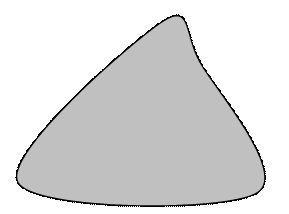 Tip of iceberg
Tip of iceberg
 |
Underwater level
 |
Deep level
Observation task
Choose an observation framework and format to observer a lesson episode or a micro-teaching activity. After the observation share your results with the “observed” teacher and both complete the chart below to evaluate the observation framework that you used (tick off the items with aif “Yes”):
| Reflections of the observer | Reflections of the observed |
| · The observation framework was helpful · The observation format was convenient · The reaction of the observed teacher to the observation was positive · The reaction of the observed teacher to the results of the observation was co-operative · The observation results prove to be useful for the observer · The observation results seem to be useful for the observed · This framework and format of observation should be definitely recommended for future use | · The goal of observation was clear to me · The behavior of the observer was supportive · The results of observation were presented in a non-judgmental way · The observer did one’s best to understand the design of the lesson ad the reason for the chosen techniques · The observer’s visit proves to be very useful · The observer appeared to be satisfied with the observation results · This observation should definitely be recommended for future use |
Micro-teaching
Teaching a lesson of your choice and reflect on it by ticking off statements about your own lesson if “Yes”. Compare your statements with those of your observers.
| Statements about your own lesson | a |
| · I have planned my lesson with clear objectives of teaching in mind | |
| · I had a good command of the teaching material | |
| · My teaching techniques were logically sequenced | |
| · My teaching goal was fully attained in the lesson | |
| · All the tasks were well fulfilled by the learners | |
| · The learners were motivated and involved in the activities | |
| · Interaction during the lesson was active and productive | |
| · The process of the lesson was well structured | |
| · The result of the lesson was achieved and demonstrated by learners |
Integrated task
· Describe your teaching situation
· Clarify the objectives of your lesson
· Write a lesson plan
· Indicate where you taught your lesson and to whom
· Supply the results of your lesson observation by a visitor
· Produce a reflection on your own lesson
· Formulate recommendations on how your lesson can be further improved
Answer keys
Date: 2014-12-22; view: 5116
| <== previous page | | | next page ==> |
| High-Luminance Color Appearance Model | | | Warming-up discussion 1.1 |
